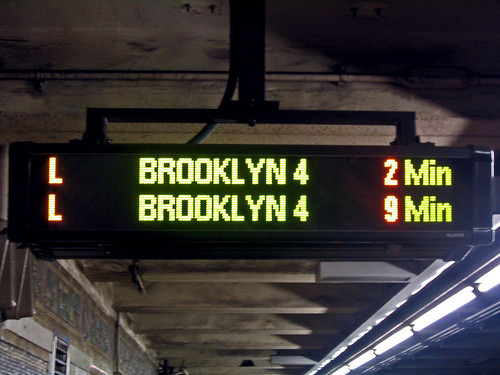
The current remains of earlier work in the 2nd Ave. subway tunnel. (NYTimes.com)
My dad, 57, has spent his entire life in New York. He is one of millions of people skeptical that a Second Ave. subway line would be operational in their lifetimes. Can you blame them?
This subway line has transcended history. Originally proposed in 1929, the line has become a symbol of the rise and fall of American urban society in the Twentieth Century. It was the victim of short-sighted policies and poor financial planning by the ancestors of today’s MTA, the government of New York City and the old IRT and BMT corporations. When automobiles and Robert Moses took over New York City, the Second Ave. subway died for the second time in the 1940s.
It was revived in the 1970s, only to mee its end at a broke city. We had no money; we had no presidential support (“Ford to City: Drop Dead”). But we do still have a remnant from that area: some completed parts of that infamous Second Ave. line. Don’t believe me? Just look at the top of this post.
Now, if the news is to be believed, the Second Ave. subway will soon exist. The City, as NY1 reported today, is one month away from construction on this ill-faited and much-needed subway expansion. Allow me to quote, at length:
MTA officials say that in a few weeks, they will award a $333 million contract to build what they call Phase One. “This is real now, and it is happening,” said Mysore Nagaraja of the MTA Capital Construction Corporation. “And we are excited about it.” …
A consortium of three American companies submitted the winning bid for construction work: Skanska USA Civil, Schiavone Construction, and J.F. Shea Construction. They will be formally awarded the contract after a two-to-four-week vetting process.
Then construction work will begin between 96th and 92nd Streets, where a tunnel boring machine will begin drilling the new tunnels.
So this is actually happening. In a few years, the Q will go beyond 57th Street up into areas of the Upper East Side that desperate need subway service. Then, we’ll get the turquoise T. But what does this mean for the folks living along that Second Ave. corridor?
Well, at first, there will be disruptions. But the MTA isn’t exactly using the cut-and-cover method to construct this subway line. Here’s how Nagaraja explained it to NY1. “We are going to be taking two to three lanes for construction,” he said. “And we have to relocate all the utilities there first. And once the utilities are relocated, then we have to make this hole, which is about 60 – 70 feet deep. That is when the machine can be dropped in there and [we can] start assembling the machine.”
Construction trailers and heavy machinery will soon dot the landscape of Second Ave. But then the boring machine will be dropped far underground and the real work will begin as the city finally starts to connect the tunnel sections. We’ll have a new subway line soon enough. My dad won’t believe it until he sets foot in one of the new stations, and I’m sure millions of New Yorkers share his skepticism. But sooner, rather than later, we’ll have to find another ill-fated project to hope for aimlessly. How about a new river crossing?


 Almost two weeks ago, we
Almost two weeks ago, we 








